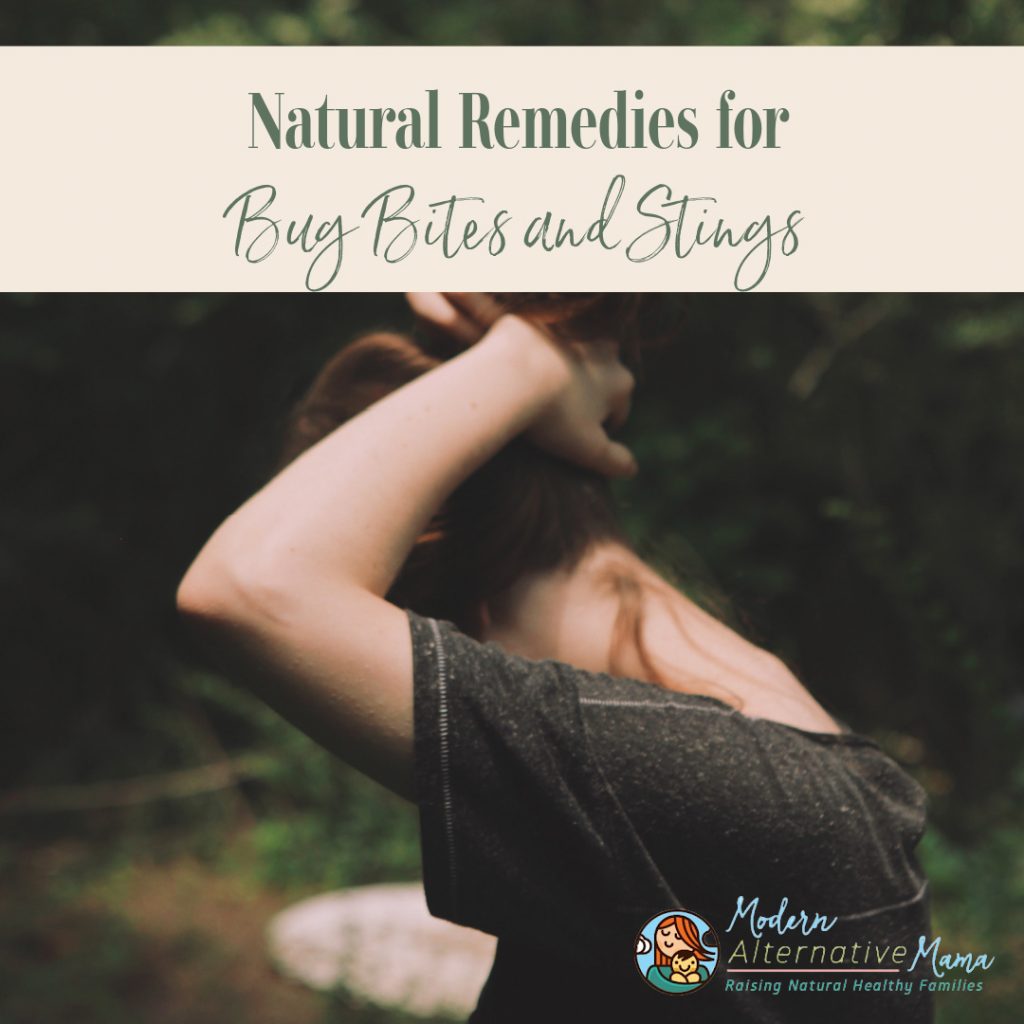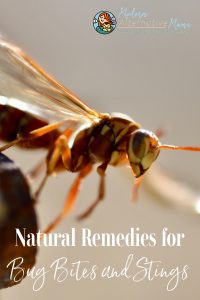By Danielle and Rustina, Contributing Writers
We enjoy getting outdoors as often as possible. Whether we are playing in the creek during the summer, preparing a campfire in the fall, or hunting morels in the spring, we need to protect ourselves and our families from insects. Some bug bites and stings may just be an inconvenience, but sometimes, they can cause a life-threatening allergic reaction or an infection such as Lyme Disease.
These complications seem to be rising considerably in the last couple of decades. Prevention is obviously the best route (read more here and here), but sometimes, it still happens. To try and minimize the bites and stings I use Earthley Wellness Pest-Aside. In the dreadful year of the plague, errr I mean 2020, one of my sons was diagnosed with Lyme Disease. It was not a fun adventure (especially with all the extra hurdles preventing regular interaction with physicians). Still, thankfully, he seems to have recovered very well despite the lack of allopathic help.
I was determined not to let fear stop us from doing what we loved the most—exploring nature. Here are the steps and remedies I keep for dealing with insects in my natural medicine cabinet.
When the Insect Strikes
Immediately after noticing the bite or sting, analyze the area. Is it just one bite or a handful of smaller bites? Was the child playing outdoors, or was it an overnight spider bite? A general idea of what you are dealing with is an excellent place to start. Is there a stinger or head of the insect stuck in the wound that you need to remove?
Next, gently wash with soap and water and apply a drawing paste or salve, like Earthley’s Black Drawing Salve, to pull out any toxins. I like to use gentle handmade soaps, like Earthley’s Oatmeal and Honey or Anti-Itch soap bars.
Then, apply an anti-itch remedy to curb the pain and sting. Reapply as needed, and use a soothing herbal salve if you have an aggressive itch-er.
Of course, the best remedy is prevention. Always have a natural bug spray or salve on hand! It also wouldn’t hurt to plant flowers and herbs in the area you play in often to ward off bugs.
6 Ways to Remedy Bug Bites and Stings
- Herbs:
- Plantain. Yes, that little wide-leaved plant in your yard is fantastic for relieving the itch of mosquitoes and other bites. When bit, grab a fresh leaf (that has not been sprayed) and either mash it in a bowl with a little bit of water or chew it briefly and apply the mashed leaf to the bite area for a few minutes. You can also infuse plantain into any liquid oil to make a plantain salve at the ready.
- Comfrey. This is great for taking out the itch and irritation! It is anti-inflammatory, so it helps reduce swelling and pain as well. You can read more about the documented properties of comfrey here. Infuse leaves in a skin-friendly carrier oil like coconut, almond, or olive oil to use on the skin. *note: do not use it internally. To infuse, fill half a jar with dried leaves, cover with oil of your choice to the top of the jar, sit for 1-2 weeks, and strain the infused oil.
- Calendula helps soothe pain and reduce inflammation. It can be infused as an oil, mixed with wax for a salve, or used as an oil. Instructions for a calendula salve can be found here.
- Neem. Neem is used medicinally in many types of medicine, including Ayurveda. It is great for healing and preventing insect bites and stings! You can read more about that here. Infuse coconut oil and apply liberally on bites, stings, or exposed skin when spending time outdoors.
- Drawing Salves
- Bentonite Clay
- Activated Charcoal
- French Green Clay
- For those prone to significant reactions to bites and stings, applying a drawing salve or paste to the bite is a good idea. Make a paste with a bit of bentonite clay-activated charcoal or both, and cover the area. Allow to dry, and wash off later in the day. Reapply as needed. Then, you can use another natural remedy in the area as well. It’s super easy to DIY your black drawing salve. If DIY is not your thing, you can also purchase a Black Drawing Salve to have on hand.
- Essential oils are also quick to resolve the itch and reaction to a bite or sting. Be sure to dilute the essential oils in a carrier oil first! Coconut or Olive Oil are excellent.
- Lavender
- Tea Tree Oil
- Helichrysum
- Frankincense
4.Paste A quick at-home remedy is to make a baking soda paste to cover the bite or sting, allow it to dry, and remove it later. This soothes the inflamed area.
5.Epsom salts mixed with a bit of honey. Many swear by this natural paste that helps relieve the itch and keep the area clean of unwanted bacteria (thanks to the antibacterial properties of honey). The stickiness just may prevent your little one from scratching, or they may just eat the honey (win-win).
6.Old Time Food Remedies swear by a raw potato or onion slice on the affected area.
Signs of Healing (and When to Worry)
A little bit of redness that is continuously reducing can be expected. Pain, swelling, and irritation are normal initially but should keep reducing naturally. It shouldn’t get worse.
If the area becomes so inflamed that it hurts the child to move the body part, it may be time to call your trusted physician to see if there’s anything concerning.
If you see a target-like ring around the bite, this may be a sign of Lyme Disease infection, and you may also want to consult a trusted healthcare practitioner for your preferred course of treatment. If you have the tick or at least the head of the tick, it can be sent in for testing to confirm whether it has Lyme Disease spread. You can test the tick here. You can test yourself or others at Everlywell.
A bacterial infection is also a concern, so keep the area clean and try to discourage a child from scratching.
If it does look infected, apply honey or an herbal salve at the first sign of red inflammation or pus. Likewise, if your child is prone to excessive itching and breaking open the skin around bites, applying such a salve as soon as you see a bite is wise as prevention.
If the bites or spots begin to spread (without further time outdoors), you may want to look into impetigo, bed bugs, or the like. Many small red and particularly itchy bites may be from chiggers. You will want to provide an anti-itch since they are so scratchy! I like to use Black Drawing Salve and Anti-Itch soap.
We desperately need fresh air and sunshine to stay healthy. Don’t let the bugs stop you from getting your fill! Just remember to prepare yourself and your medicine cabinet with these remedies!
If you want to see what a natural remedies first aid kit looks like, check it out here.







